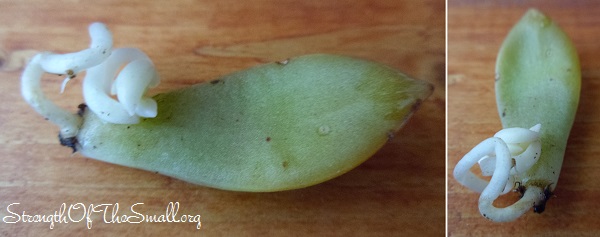Despite the hot weather, I took a few minutes to walk through the garden in the morning. I was glad to see my Plumbago Auriculata ‘Imperial Blue’ evergreen shrubs all in bloom with gorgeous royal blue flowers.


Happy Gardening!
Finding Contentment in Every Situation
Finding Contentment in Every Situation
Despite the hot weather, I took a few minutes to walk through the garden in the morning. I was glad to see my Plumbago Auriculata ‘Imperial Blue’ evergreen shrubs all in bloom with gorgeous royal blue flowers.


Happy Gardening!
The weather is at its best today and I am so grateful. The National Weather Service has issued an excessive heat watch in effect from last Friday through Sunday evening (with temperatures as high as 106° Fahrenheit). I hope that just like us, everyone else is making plans for the upcoming days. Be it a trip to the Beach, Lake, Book Store, the Mall or just staying indoors and cooling off. Though I am not fond of High Winds, these are the times I really wish for them as they always help alleviate the hot weather conditions.

My garden looks lovely and the plants are thriving in this hot weather. I deadheaded some Roses and some Petunias. After going around the property searching for Squirrels holes (none so far) and making sure that no plants have been disturbed/damaged on the Raised Garden Beds; I checked on some of my Succulents to see if the leaves I planted a couple of weeks ago had sprouted roots. And what a pleasant surprise!
I use two methods to propagate my leaves:
1. Setting the leaves on top of the soil
2. Sticking them into the ground.
The second method is the one I use when propagating my Succulents outdoors. I made the mistake of setting some leaves on top of the soil, just to find out that they had all disappeared the following day. I blamed the disappearance on the Wind. I can’t say for sure that some Squirrels ate them; however, I have seen one gnawing on my Aptenia Cordifolia (Baby Sun Rose), Portulaca Oleracea (Purslane) and Portulaca Grandiflora (Moss-Rose).
After that unfortunate incidence, I decided to stick a few leaves in the ground, all disappeared except for one. As I gently pulled it out, I was happy to see that it’s been busy growing roots and what appears to be leaves? I moved it to a bigger planter along with my Sedum Morganianum (Donkey Tail). I will continue to water it regularly while allowing the soil to dry a little between watering (to avoid killing the plant).
Happy Gardening!
I love waking up to something pretty in the garden. The lovely Daylily below is called ‘Pretty Woman.’ Isn’t she pretty? It’s one of my favorite Daylilies followed by ‘Strawberry Candy.’


Happy Gardening!
Today I am sharing a picture of some Allium Drumsticks growing in my backyard.


Wishing you all a wonderful day and a blessed Father’s Day weekend with your loved ones.
With Summer rapidly approaching and all the gardening projects almost complete, we were faced with one question: to cut down the Pine Tree or let it be? It stands tall between the deck area and the carport, providing some shade to these areas. However, the amount of pine needles falling from this tree alone is overwhelming. It requires high maintenance and constant clean up as the needles fall year-round. These trees are quite messy, the pine needles are always falling and piling up in the backyard. When the weather is good, clean up is easy and when the weather is erratic (with high winds lasting up to a week), clean up becomes quite painful as they get everywhere. Now I understand why some people allow trash to pile in their yard. It’s hard work, it’s endless and those needles are dangerous. Have you ever been poked by a pine needle?
After much considerations (six years of deciding the fate of the Tree), we cut approximately one-third of its branches a week and a half ago. Yesterday, with the help of our handy neighbor and his tools, we were able to cut down the Tree. We’ve been poked so much by the needles and covered in sap. It was worth the pain and we have no regrets. We’ve opened up the area and best of all, no more pine needles to deal with.

I love conifers and I prefer Fir Trees (Fraser Fir, Balsam Fir, Silver Fir, Spanish Fir and Korean Fir amongst my favorites). Pine Trees are gorgeous, especially when planted in groups or lined up and I love decorating my garden with pine cones. Unfortunately, my Pine Tree did not produce cones and it was growing at a slant. The Tree simply didn’t meet our needs and we needed the space, which is the perfect location for an upcoming project.
Pine Needles Uses:
Health Benefits
According to Wikipedia, Some species have large seeds, called pine nuts, that are harvested and sold for cooking and baking. The soft, moist, white inner bark (cambium) found clinging to the woody outer bark is edible and very high in vitamins A and C. It can be eaten raw in slices as a snack or dried and ground up into a powder for use as an ersatz flour or thickener in stews, soups, and other foods, such as bark bread. A tea made by steeping young, green pine needles in boiling water is high in vitamins A and C. More information here.
Learn How to Make Pine Needle Tea. Click here to learn about the right Pine Needle to choose. Yew, Norfolk Island Pine and Ponderosa Pines are poisonous.